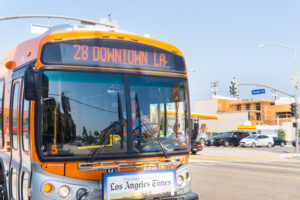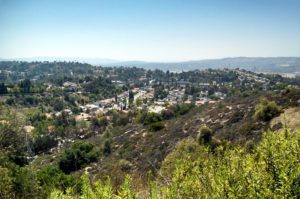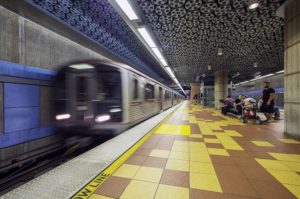
Addressing Long Commute Times along the Slauson Corridor
In 2018, the city of Los Angeles received a grant to develop a neighborhood-level climate resiliency plan for South Los Angeles. Working with community-based organizations
Variable Definitions:
Vehicle Ownership: The percentage of households who do not possess a working vehicle, excluding motorcycles or other recreational vehicles
Source:
American Community Survey, 5-year estimates, Table B25044
Years Available:
2010 – 2023
*Note: Each year of available data shown above is a 5-year estimate, or an average of data collected over a five year period. 5-year estimates are used to increase the reliability of the data at small geographies like neighborhoods and census tracts. The years shown on the NDSC map represent the final year of the five year average (e.g. “2010” represents 2006-2010 data, “2011” represents 2007-2011 data, and so on). For the most impactful comparison of data over time, the ACS recommends comparing non-overlapping years (e.g. 2010-14 with 2015-19).
No Vehicle Households
A household is considered to have a vehicle when it owns or leases a working passenger car, van, pickup truck, or panel truck and keeps the vehicle at home. Company and government-owned vehicles such as police cars are counted if they are also used for non-business purposes. Motorcycles and other recreational vehicles are not counted in this measure.
Access to reliable transportation impacts many other areas of life including employment opportunities and access to food and healthcare. In some urban areas, low vehicle ownership is not a significant barrier to accessing employment and other resources if public transit is widely available and used. Because the City of Los Angeles is geographically large and many residents tend to live and work in separate neighborhoods, vehicle ownership is an important part of understanding geographic mobility in this region.
Citation:
“American Community Survey and Puerto Rico Community Survey 2015 Subject Definitions.” United States Census Bureau: American Community Survey, 2015. Link.
“Highlights of the 2001 National Household Travel survey: Household, individual, and vehicle characteristics.” United States Department of Transportation: Bureau of Transportation Statistics, 2001. Link.

In 2018, the city of Los Angeles received a grant to develop a neighborhood-level climate resiliency plan for South Los Angeles. Working with community-based organizations

Access to cost effective, time efficient and environmentally conscious transportation is a pressing issue affecting people around the world. In 2017, INRIX Global Traffic Scorecard

Across Los Angeles County’s vast and sprawling 4,751 square miles, more than 4.5 million commuters walk, bike, drive, rideshare or take public transit to get
